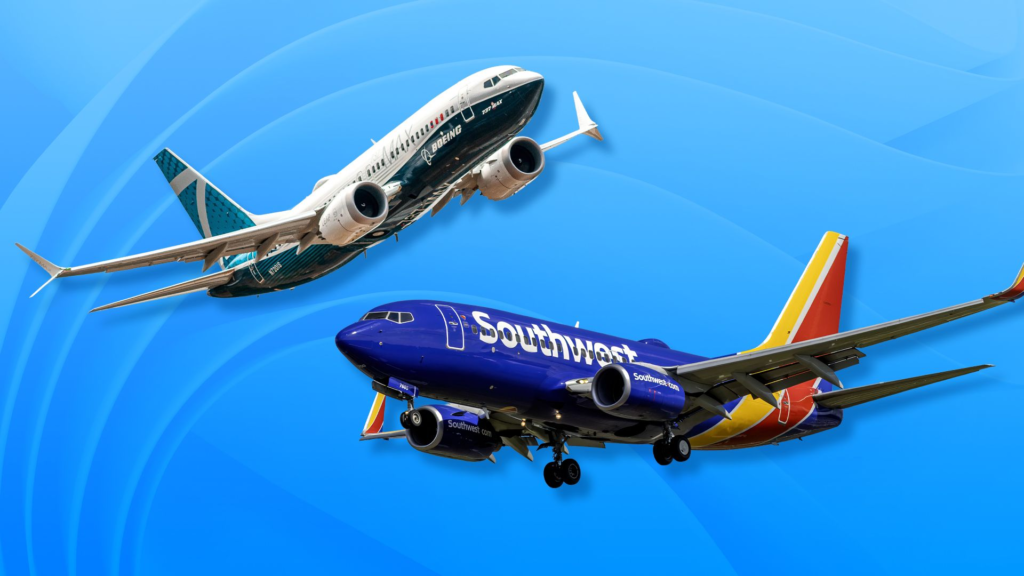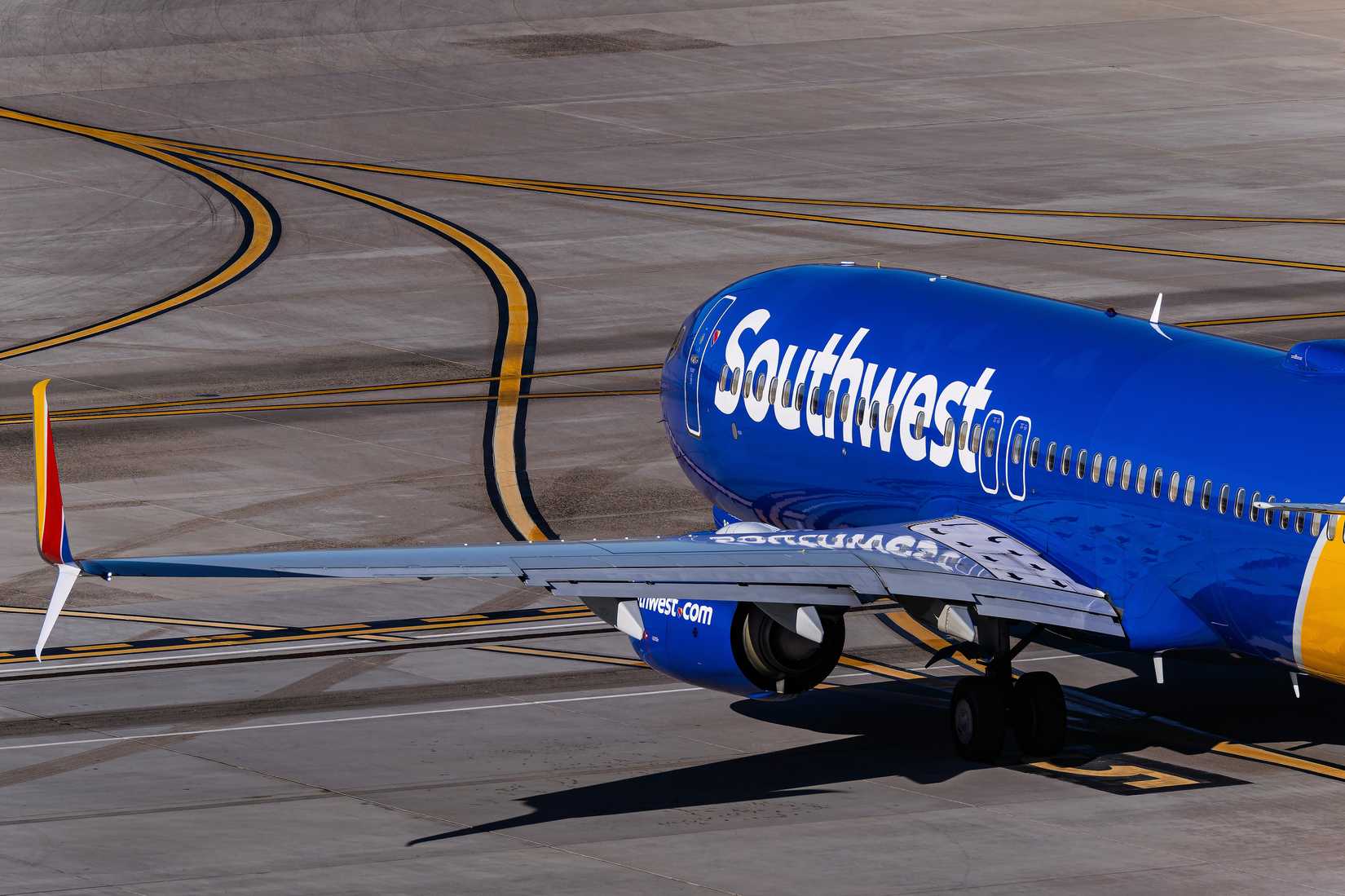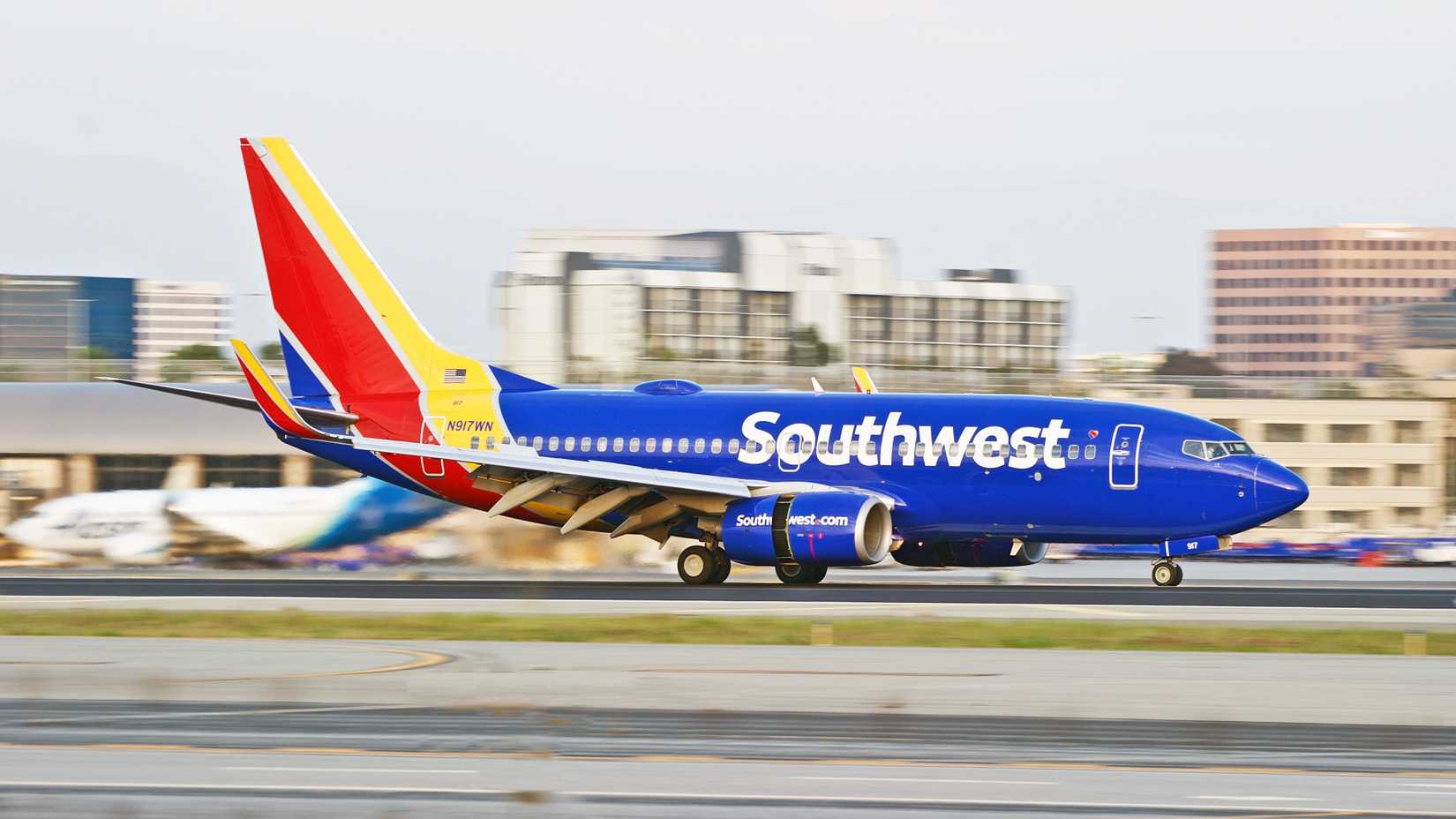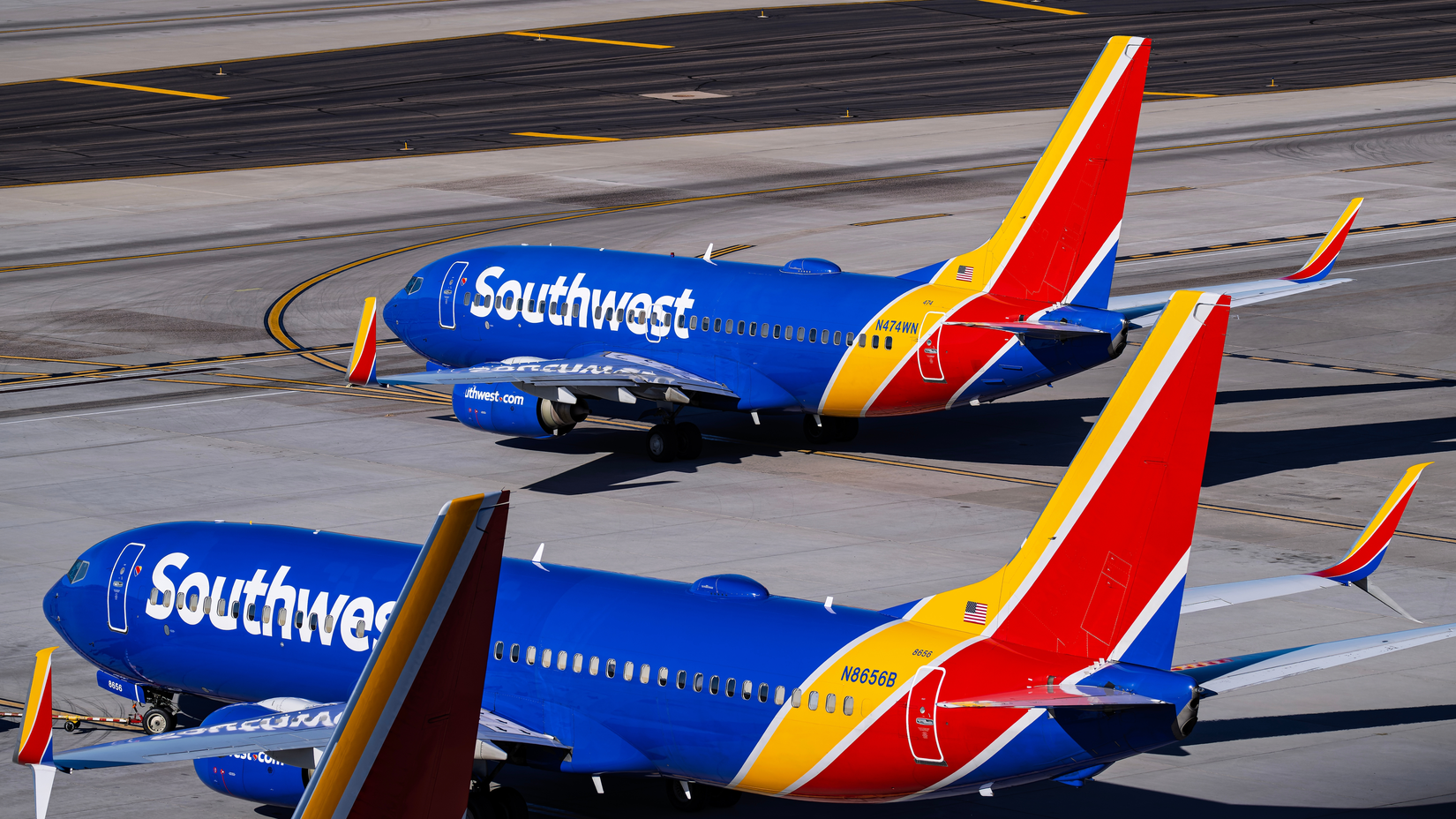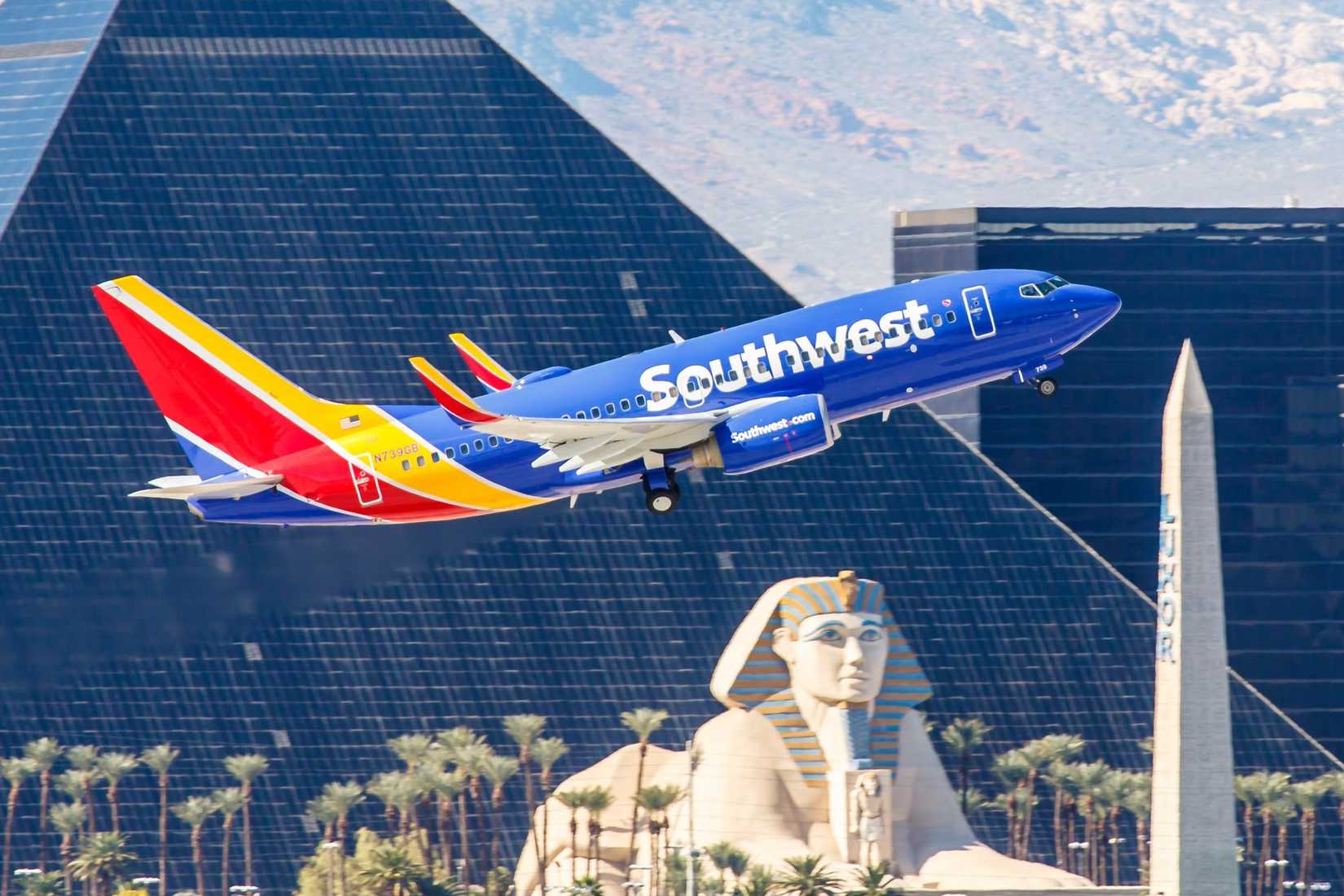Very few airlines continue to operate the Boeing 737-700 today, primarily because the jet is an outdated model which offers relatively low capacity and weaker seat economics than other members of the Boeing 737 family.  Southwest Airlines, however, is a major exception to this rule. The carrier relies heavily on the Boeing 737-700 for a handful of reasons, starting with the fact that it offers the ideal sweet-spot gauge for the airline’s high-frequency, medium-haul network. The lightweight and nimble member of the Boeing 737 family preserves the airline’s single-type efficiency (as it only operates Boeing 737s) and its performance on short fields also makes it exceptionally valuable to the airline.
Southwest Airlines, however, is a major exception to this rule. The carrier relies heavily on the Boeing 737-700 for a handful of reasons, starting with the fact that it offers the ideal sweet-spot gauge for the airline’s high-frequency, medium-haul network. The lightweight and nimble member of the Boeing 737 family preserves the airline’s single-type efficiency (as it only operates Boeing 737s) and its performance on short fields also makes it exceptionally valuable to the airline.
Historically, the Boeing 737-700 has been a core component of the Southwest Airlines fleet, and the airline has acquired more than 300 of the type over years. This has allowed the airline to lock in scale benefits and ensure flexible scheduling while newer Boeing 737-800 airframes will backfill peak demand. From a technical standpoint, the Boeing 737-700 also sets key benchmarks, such as its 41,000-foot flight-test ceiling. From a strategic perspective, the aircraft is a relatively easy bridge to the Boeing 737 MAX 7, but the delays in the certification process for that model have left Southwest at this moment in time without a replacement for the 737-700.
A Brief Overview Of The 737-700
Let’s begin by taking a deeper look at the Boeing 737-700 and what it brings to the table. This aircraft is a mid-size member of the Boeing 737 Next Generation family, and it sits between the shorter Boeing 737-600 (a rarely-utilized model) and the more popular Boeing 737-800 and 737-900 models. Originally launched in the mid-1990s and entering service in 1998, the aircraft pairs the efficiency of a next-generation (for the time) model that offered updated avionics and more capable CFM56 engines. The aircraft would typically be configured with around 130-150 seats across two classes, with some airlines even using around 140 in a single-class configuration. The aircraft offers impressive extended-range capabilities, with additional tanks improving its range to roughly 3,000-3,500 nautical miles.
This ultimately enables carriers that operate the model to serve pretty much every transcontinental route in the United States, northern Latin America or even some Hawaiian missions. Under some circumstances, the aircraft may even be suitable for transatlantic flights between some destinations in the North Atlantic. The Boeing 737-700 is prized for its exceptional short-field performance, its improved 41,000-foot certified ceiling and efficient cruise capabilities near Mach 0.78. The aircraft’s blended or split winglets ultimately improve its fuel burn and climb capabilities. The aircraft offers a few key advantages, with fleet commonality being a key plus.
The aircraft’s spare parts profile and procedures largely align with those of the Boeing 737 Next Generation family, and they lower training and maintenance costs over mixed fleets. The Boeing 737-700’s primary competitor was the Airbus A319, and the aircraft is set to be succeeded by the Boeing 737 MAX 7, which offers a similar size but improved range and newer LEAP-1B engines. More than a thousand Boeing 737-700 models were produced, and the type remains a flexible workhorse for airlines that value frequency, network breadth and dependable economics on mid-haul services.
A Deeper Look At The -700’s Role
Southwest’s Boeing 737-700 is the fleet’s ultimate precision tool, and it is small enough to profitably serve thinner city pairs and off-peak waves, although it is also capable of covering pretty much any domestic mission. With exactly 143 seats in Southwest’s chosen single-class layout, the Boeing 737-700 helps support the airline’s frequency-led schedule, with more departures and better day-of-travel choice. The hybrid hub structure operated by the airline helps improve trip costs without adding to an aircraft’s gauge. The jt is the backbone of irregular operations recovery, as the jet’s lower seat count makes it incredibly useful for serving reaccommodation flights and keeping yields steadier on marginal flights.
The aircraft anchors the Southwest Airlines single-type operating model. Pilots, spare parts, aircraft tooling and maintenance procedures can be aligned across the airline’s fleet. This allows the Boeing 737-700 to flexibly swap aircraft and protect network completion factors. From a financial perspective, the aircraft’s cost per available seat mile (CASM) is higher than that of the Boeing 737-800 or Boeing 737 MAX 8, but its revenue per available seat mile (RASM) often wins on thinner routes where a larger jet would fail to achieve break-even load factors.
From a strategic perspective, Southwest Airlines is migrating towards the Boeing 737 8 MAX for dense peaks while it retains the Boeing 737-700 for breadth and catering to seasonal capacity. Network experimentation is also going to be a key element of the airline’s process. Across the board, the jet smoothes demand and protects margins on smaller-market routes, giving the airline a nimble lever it can pull to match capacity on a day-by-day basis.
Why Did Other Airlines Retire The 737-700, But Not Southwest?
Many airlines upgauged from the Boeing 737-700 as their business models began to favor aircraft that could offer more seats per takeoff. When operating at slot or crew-constrained hubs, the Boeing 737-800 or the Boeing 737 MAX 8 delivers lower costs per available seat mile and more premium or extra-legroom seating. Carriers also wanted to improve cabin commonality with premium products that the Boeing 737-700 was not able to easily match.
Southwest Airlines is the outlier here, because the Boeing 737-700 fits into its frequency-led single-class operating strategy. This jet allows the airline to profit on thinner city pairs and off-peak waves without ever overgauging. The aircraft’s short-field performance made it exceptionally useful. Here is a deeper look at the carrier’s current Boeing 737-700 and Boeing 737 MAX 7 fleet and order book, according to fleet data made available to Simple Flying by ch-Aviation:
|
Boeing 737 Variant: |
Number In Southwest Airlines Fleet: |
Outstanding Orders: |
|---|---|---|
|
Boeing 737-700: |
308 |
|
|
Boeing 737 MAX 7: |
274 |
The Boeing 737-700 is owned and paid-down, so low capital costs will offset some fuel and maintenance penalties. From an operational perspective, a huge installed base and parts inventory, alongside pilot commonality with other members of the family have made the aircraft a uniquely valuable asset to Southwest. Other airlines, primarily due to their operational structures and strategic visions, simply did not see as much value provided by the aircraft.
When Will The MAX 7 Replace The -700?
The Boeing 737 MAX 7’s entry into the Southwest Airlines fleet is undoubtedly a slow process. The carrier is currently guiding to 737 MAX 7 certification and initial deliveries taking place in 2026, with the type set to enter service not long thereafter. The carrier plans on replacing Boeing 737-700 models progressively throughout the decade.
This pace ultimately hinges on how quickly the Federal Aviation Administration can sign off on Boeing’s engine anti-ice fix and continue certification work. Industry reporting and Boeing itself has pointed to 2026 as a practical start date, despite earlier hopes being for 2025. Southwest’s published fleet goal is to be an all-MAX operator by around 2031.
This is an ambitious timeline for phasing out all the airline’s Boeing 737-700 models, which it has quite many. Some investors undoubtedly see the five-year timeline as somewhat unrealistic, despite Boeing’s attempts to increase its 737 output and ramp up its services and operations. Any further certification hiccups will only further delay this timeline.
What Will Southwest Airlines Do When There Are No More 737s?
The bigger question that remains to be answered is what exactly the pathway forward is for Southwest Airlines when the Boeing 737 is no longer on the market. Given the incredible challenges associated with the Boeing 737 MAX’s development (and the company’s rhetoric), it is pretty clear that there will not be a Boeing 737 MAX successor.
However, Southwest Airlines is a company which has been built over the course of fifty years into one of the nation’s largest airlines. Throughout that entire time, it operated exclusively the Boeing 737 family, including multiple different variants over the years, all of which helped it expand its network across the continent.
Using exclusively Boeing 737s has been a piece of Southwest’s long-standing operational strategy, and it helps lower costs through the benefits of fleet commonality. Unfortunately, when there are no longer Boeing 737 aircraft on the market, the carrier will have to fundamentally reorganize its long-haul network strategy.
What Are Southwest’s Options In This Scenario?
Southwest Airlines has relatively limited options when it comes to finding an aircraft replacement, especially for the smaller Boeing 737 MAX 7. As airports continue to become more congested, airlines are increasingly hesitant to operate these kinds of smaller-gauge models.
The carrier could look to restructure its network based on Airbus jets, a move that would fundamentally alter the way the company operates. Beyond this, we would also have to note the massive capital investment that this kind of fleet expansion would require, something that Southwest Airlines certainly is not all that excited about.
The more likely option for Southwest is that it will renew its fleet with whatever new model Seattle-based planemaker Boeing brings to the table. This kind of aircraft will likely be light, offer next-generation capabilities, and serve as a natural stepping stone for legacy Boeing 737 operators.


